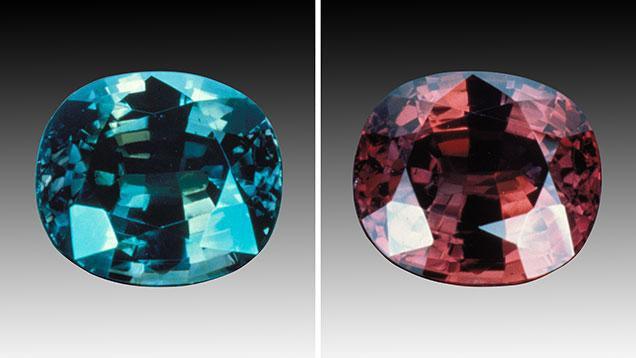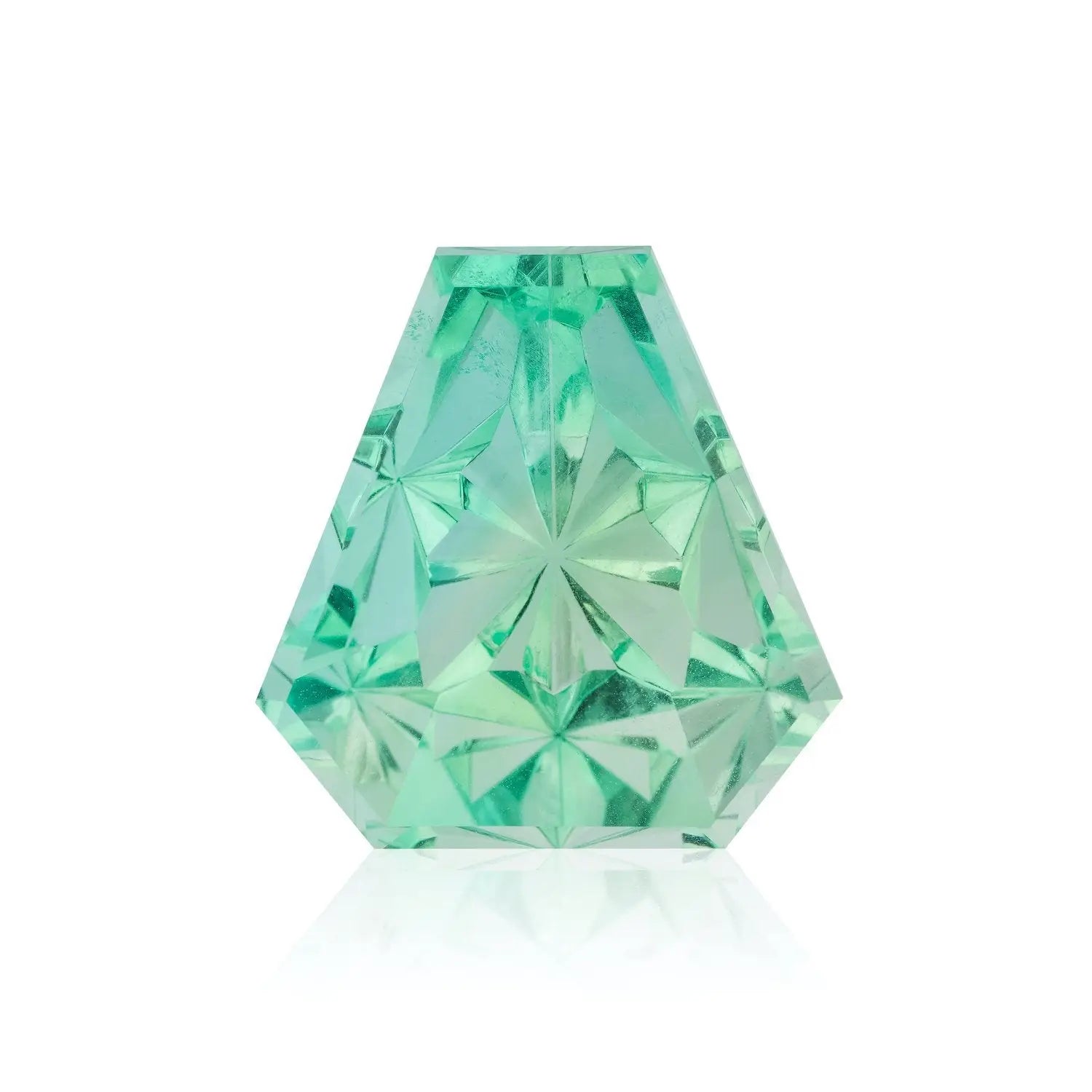
Russian Alexandrite: Meet the Gem World’s Great Chameleon
“Emerald by day, ruby by night.” That’s how gem enthusiasts often describe alexandrite, a rare variety of chrysoberyl mineral known for its striking color change. Alexandrite typically shifts from a lush green or bluish-green in daylight to a warm red or purplish-red under incandescent light.
This remarkable gem was first discovered in 1830 in the emerald mines of Russia’s mineral-rich Ural Mountains. According to legend, an early specimen was given to Swedish mineralogist Nils Gustaf Nordenskiöld, who initially identified it as emerald. However, after further inspection, Nordenskiöld noted the gem’s higher hardness compared to emerald. While emeralds measure between 7.5 and 8 on the Mohs Scale of Hardness, alexandrite scores an 8.5. This difference prompted Nordenskiöld to study the stone more closely. He was astonished to find that, under candlelight, the gem shifted from green to red. This discovery led him to classify it as a new variety of chrysoberyl.
The gem was named alexandrite in honor of the young Alexander II, the future Tsar of Russia. It quickly became popular in Russia, not only for its fascinating color change but also because the colors—red and green—matched those of the tsarist army. For this reason, alexandrite became a symbol of national pride in Tsarist Russia.
The Superior Color Change of Russian Alexandrite
The alexandrite found in Russia’s Ural Mountains is considered the finest in the world. These gems exhibit vivid hues and dramatic color shifts, transitioning from a deep greenish-blue, often called teal, to raspberry red. So extraordinary are their qualities that the Russian alexandrites set the standard by which all other alexandrites are compared.

Ring from the Jogani collection featuring a 2.5-carat, untreated alexandrite from the Ural Mountains of Russia with a color change from green-blue in fluorescent light to purplish-pink in incandescent light.
While countries such as Brazil, East Africa, and Sri Lanka produce high-quality alexandrite, their stones often have muddier colors and less distinct shifts compared to the extraordinary Russian alexandrites of the 19th century.
The Magic Behind Alexandrite’s Phenomenal Tricks
So how does alexandrite’s remarkable color change occur? The gem is naturally pleochroic, meaning it displays different colors when viewed from different angles. In alexandrite, these colors include green, orange, and purple-red. The presence of chromium during its formation is what gives alexandrite its distinctive colors, the same element that makes emeralds green and rubies red.
However, pleochroism is not responsible for alexandrite’s famous color change. This shift is primarily due to the specific way chromium affects how the gem absorbs and reflects light. Alexandrite’s spectrum shows a transmission peak at around 490 nanometers (blue to blue-green light), an absorption peak at 570 nanometers (yellow light), and another transmission peak beyond 600 nanometers in the red and infrared range.
While other gems can change color under different lighting, alexandrite’s transformation is so pronounced that the phenomenon is often referred to as "the alexandrite effect.”
Alexandrite can also exhibit another optical phenomenon called the “cat’s-eye effect.” This occurs when parallel needle-like inclusions, sometimes called "silk," reflect light, creating a silky sheen. When the gem is cut as a domed cabochon, this sheen concentrates into a narrow band across the dome, resembling a cat’s narrow pupil. This is known as "chatoyancy."

An original Jogani ring featuring a 5.53-carat cat's eye alexandrite from Ceylon (Sri Lanka).
Because fine alexandrite has few inclusions, chatoyancy is rare in this gem. However, when it does occur, it is spectacular to witness a stone display both phenomena simultaneously.
Russian Alexandrite Is Exceptionally Rare, Valuable
Some jewelry historians credit American mineralogist and mineral collector George F. Kunz, former Tiffany vice president and identifier of the gem kunzite, for putting alexandrite on the map. He was said to have made several trips to Russia for the finest stones. Since then, however, the remarkable Ural Mountain alexandrite deposits have all but been depleted.
Due to its rarity, synthetic alexandrite has been produced using processes such as Czochralski, floating zone, and flux methods. Synthetic color-change corundum and spinel are also used to imitate natural alexandrite.
Today, Russian alexandrites can still be found at auction, in estate jewelry, and in Victorian-era antique pieces. These gems are highly prized, particularly stones weighing a carat or more that display pure hues and strong color shifts. Alexandrite remains one of the most captivating gems, with the unique ability to mesmerize anyone lucky enough to witness its beauty.
Top: While Russia is the most famous alexandrite source, this alexandrite from Brazil shows beautiful color change from daylight (left) to incandescent light (right). © GIA & Tino Hammid, courtesy Mayer & Watt.


